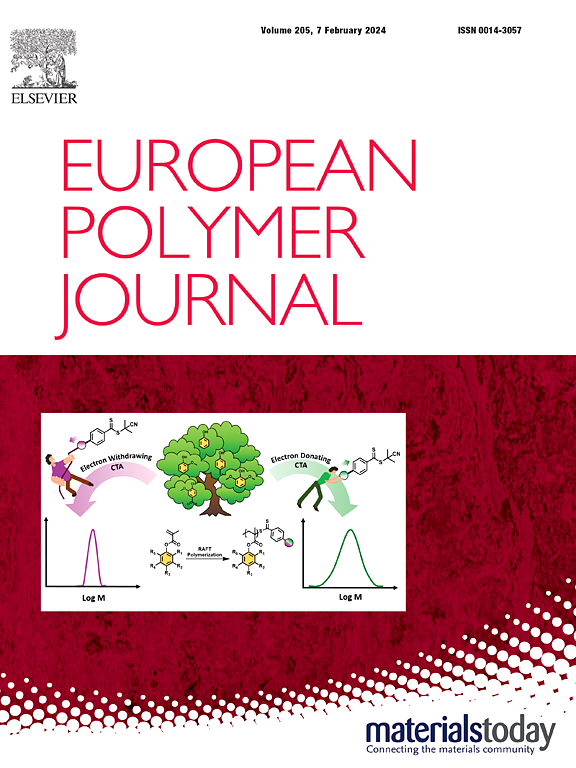Effect of solvophilic monomer unit distribution on the block copolymers in RAFT-mediated dispersion polymerization-induced self-assembly
IF 5.8
2区 化学
Q1 POLYMER SCIENCE
引用次数: 0
Abstract
Previous studies showed the crucial effects of morphology and size of polymer vesicles on applications. Herein, we report an efficient approach for producing amphiphilic block copolymer (BCP) vesicles with various sizes via tunable distributions of solvophilic monomer units of acrylic acid (AA) on the amphiphilic BCP in reversible addition-fragmentation chain transfer (RAFT)-mediated dispersion polymerization-induced self-assembly. The distribution of solvophilic block was facilely regulated by RAFT agents with two structures and copolymerized with solvophobic monomer (styrene, St). Transmission electron microscopy and dynamic light scattering were utilized for the characterization of the morphology and size of self-assemblies. As a consequence, PAA-b-PSt-b-PSt vesicles with sizes ranging from 85 ± 8 nm to 692 ± 59 nm were produced through the distribution of BCP. In addition, large compound vesicles, porous nanospheres, and multilamellar vesicles were observed in the system. Besides, we also combined the experiments with theoretical calculations to demonstrate the effect of different AA distributions in the block copolymer chains on assembly behavior, providing a new strategy for the efficient preparation of polymer nanoparticles.

求助全文
约1分钟内获得全文
求助全文
来源期刊

European Polymer Journal
化学-高分子科学
CiteScore
9.90
自引率
10.00%
发文量
691
审稿时长
23 days
期刊介绍:
European Polymer Journal is dedicated to publishing work on fundamental and applied polymer chemistry and macromolecular materials. The journal covers all aspects of polymer synthesis, including polymerization mechanisms and chemical functional transformations, with a focus on novel polymers and the relationships between molecular structure and polymer properties. In addition, we welcome submissions on bio-based or renewable polymers, stimuli-responsive systems and polymer bio-hybrids. European Polymer Journal also publishes research on the biomedical application of polymers, including drug delivery and regenerative medicine. The main scope is covered but not limited to the following core research areas:
Polymer synthesis and functionalization
• Novel synthetic routes for polymerization, functional modification, controlled/living polymerization and precision polymers.
Stimuli-responsive polymers
• Including shape memory and self-healing polymers.
Supramolecular polymers and self-assembly
• Molecular recognition and higher order polymer structures.
Renewable and sustainable polymers
• Bio-based, biodegradable and anti-microbial polymers and polymeric bio-nanocomposites.
Polymers at interfaces and surfaces
• Chemistry and engineering of surfaces with biological relevance, including patterning, antifouling polymers and polymers for membrane applications.
Biomedical applications and nanomedicine
• Polymers for regenerative medicine, drug delivery molecular release and gene therapy
The scope of European Polymer Journal no longer includes Polymer Physics.
 求助内容:
求助内容: 应助结果提醒方式:
应助结果提醒方式:


